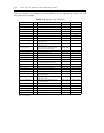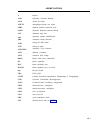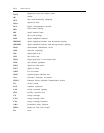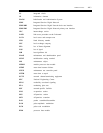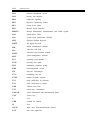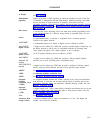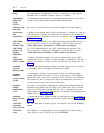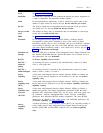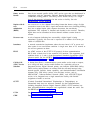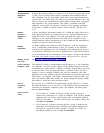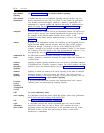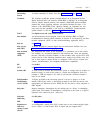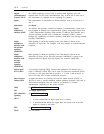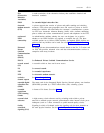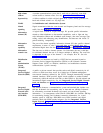
GL-4 GLOSSARY
binary service One of two network specific facility (NSF) service types that are administered in
format conjunction with the Automatic Alternate Routing/Automatic Route Selection
(AAR/ARS) routing patterns. The binary service format conveys in a single
byte all the necessary information for the service or facility. See also
parameterized service format.
bipolar with 8-
An unrestricted or clear channel line-coding format that detects strings of eight
zero consecutive zeroes in the DS1’s signal and encodes these zeros (including framing
substitution
bits) into a unique bipolar pulse sequence that meets the ones-density
(B8ZS)
requirement. This sequence is detected and decoded at the receiver. Therefore,
digital data can be transmitted on these channels without concern about its
content.
bit error rate
A unit of measure indicating how successfully a digital signal is being
transmitted. Typically, bit error rate is expressed as a number of bit errors per
1,000 or 1,000,000 bits.
burstiness
BX.25
A network transmission impairment where the error burst is 10
-2
or worse and
often results in an out-of-frame condition. A single error burst of 2.5 seconds or
less will not generate an alarm.
An AT&T version of the CCITT X.25 protocol for data communications.
BX.25 adds a fourth level to the standard X.25 interface. This uppermost level
combines levels 4, 5, and 6 of the International Standards Organization (ISO)
reference model. See also CCITT, Flexible Assignment of BX.25 Signaling
Ports, packet switching, and X.25.
Call-by-Call
A feature that allows a communications system and/or service node to request,
(CBC) Service on a call-by-call basis, services and/or features for a particular call on an
Selection
Integrated Services Digital Network primary rate interface (ISDN-PRI) facility.
These services and/or features are selected with the call-setup message using
network-specific facilities, bearer capability, and destination-address information
elements (IEs). CBC allows various voice and data services, such as
MEGACOM
®
, Software-Defined Network (SDN), and ACCUNET
®
digital
service, to be integrated onto a single transmission facility with flexible
assignment of trunks to services.
CCITT
CCSA
CDM
(Comitée Consultatif International Telephonique et Telegraphique) an
international body that sets universal standards for data communications,
including Integrated Services Digital Network (ISDN). CCITT members are
from telecommunications companies and organizations around the world. See
also BX.25 and Q recommendations.
See Common-Control Switching Arrangement.
See channel-division multiplexer.



